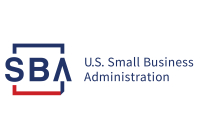Blue Ridge banking on cool cartons
The war on soft drink vending machines in schools has found an unexpected ally in Haywood County.
Blue Ridge Paper Products has joined the ranks of those hoping to ban the drinks blamed for contributing to diabetes, childhood obesity and tooth decay. The company’s motive is a bit unique, however. It hopes to peddle more milk in cartons instead of drinks in plastic bottles and aluminum cans.
Blue Ridge Paper Products started an aggressive campaign two years ago to compete with soda and juice in the schools, hoping to stem a steady decline in school milk consumption — which was shrinking as much as 5 percent a year.
“Milk just wasn’t cool anymore, and so we were looking for ways to make milk cool again,” said Pam Parris, the director of marketing for the Blue Ridge Paper packaging division.
Blue Ridge Paper — Haywood County’s largest private employer with about 1,300 workers — makes the cardboard milk cartons found in about 40 percent of America’s school cafeterias. If Blue Ridge wanted to sell more cartons, its customers — namely the dairy companies — needed to sell more milk.
One glaring problem was the dowdy looking cartons school milk came in. Compared to the multi-billion-dollar marketing budgets of Pepsi and Coke, the plain red, blue or brown cardboard cartons just weren’t cutting it with today’s youth, Parris said.
Related Items
“Traditionally school milk was pretty much tied up. The choice in school was milk or milk,” Parris said. Not any more.
“If we want our children to have the good nutrition of milk, we have to respond to that,” Parris said.
Blue Ridge Paper designed a splashy new milk carton and solicited 410 schools with 240,000 students in the greater St. Louis area to be in a market study. About a third of the schools served as a control and kept the same old milk cartons of yesteryear. School that featured the new cartons saw a 12 percent increase in milk sales during the one-year trial.
Armed with the survey results, Parris and her Blue Ridge Paper marketing team have been trotting the country promoting their new carton images and graphic designs. Their message is targeted at the school nutritionists who do the ordering.
Sandy Brooks, the child nutrition director who is in charge of cafeteria ordering for Haywood County Schools, said Blue Ridge Paper’s milk carton campaign has cropped up in all kinds of professional literature she receives, from email list serves to newsletters. She saw a Blue Ridge Paper advertisement for the new cartons in ,Nutrition Journal, a trade magazine. And one day, Brooks got the best junk mail ever: a package in the mail with samples of the new cartons, including a pair of real sunglasses, presumably as part of the “milk is cool” message.
“I am just tickled that Blue Ridge is doing what they are doing. It makes me proud,” Brooks said. But Brooks questioned how much power she has to get Pet, her milk supplier, to buy their cartons from Blue Ridge.
“I would love to say to Pet, ‘I’m not going to buy your milk unless you use Blue Ridge cartons,’” Brooks said. But Brooks said Pet has an unusual lock on the school milk market in this area.
While Blue Ridge Paper is betting on the power of the end consumer — school cafeterias — to ask their milk suppliers for the new, hip cartons, they are hitting up the milk producers with equal fervor. In the past year, 75 percent of Blue Ridge Paper’s school milk customers have switched to the new carton look. The new carton cost 3 to 4 cents, compared to 2 cents for the standard carton.
Blue Ridge Paper has proven to be a pioneer of a trend that has since taken off throughout the industry, according to Blue Ridge CEO Rich Lozyniak. Blue Ridge Paper is slowly adding a staff of graphic designers to its traditional manufacturing line-up.
“We are the innovators of a new look of packaging,” Parris said. “Our customers are beginning to call us and asking for advice on how to design their cartons.”
One of the cartons with a tie-dyed theme won Blue Ridge Paper the International Dairy Foods marketing award for 2005, a bit of a coup considering Blue Ridge doesn’t actually produce dairy products, only the container to put them in. Parris said the tie-dyed carton capitalized on the trendy “retro-look.” But it also piggy-backed off their new spokesperson: a hot character from the reality TV show “Survivor,” Rupert, whose trademark on the show was a tie-dyed tank top.
Meanwhile, the fight to get sodas, high-sugar juices and high-sodium sports drinks out of the schools is making headway. A bill in U.S. Congress that would curb vending machines of unhealthy drinks and snacks in schools has wide bi-partisan support. Several states have already adopted such measures. In hopes of averting an outright ban on their products in schools, Coke and Pepsi announced this month they would voluntarily pull non-diet drinks from school vending machines next school year.
A Government Accountability Office study last year found that 99 percent of high schools, 97 percent of middle schools and 83 percent of elementary schools have vending machines, school stores or snack bars that sell mostly unhealthy snacks and drinks. A study by researchers at Children’s Hospital in Boston, published in March by the journal Pediatrics, found that teens ages 13 to 18 who drank one 12-ounce, sweetened drink each day — such as a soda, sports drink or lemonade — in addition to their regular diet gained an average of 1 pound every 3 to 4 weeks.









